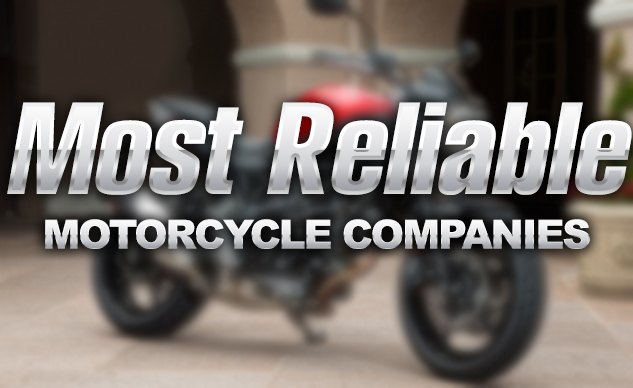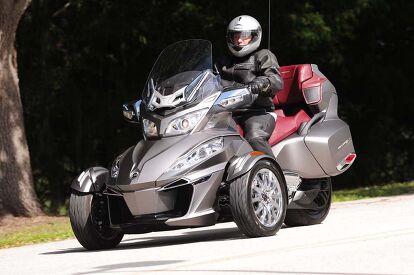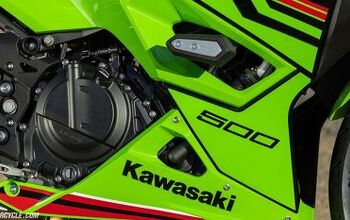The 10 Most Reliable Motorcycle Companies

Did your bike make the list?
Here at Motorcycle.com we get to ride all of the newest, latest, and greatest motorcycles on the planet. However, more often than not, our time with each bike spans the course of weeks, maybe months (but definitely not years), as new bikes are constantly flowing through our proverbial garages, waiting to get tested. This means we have reviews of almost every motorcycle on the market, but it also means that we lack firsthand experience learning about long-term durability and maintenance. So, when our readers ask about the reliability of a certain make or model, it’s a difficult question to answer, as reliability testing requires ownership for several years – something we simply aren’t in a position to provide.
Thankfully, the folks at Consumer Reports have compiled a motorcycle reliability study, gathering information from more than 11,000 riders, sharing their experiences on more than 12,000 motorcycles purchased new between 2008 and 2014. With this data, CR adjusted for mileage ridden over a 12-month span and estimated failure rates. Like golf, the lower the number (or percentage, in this case), the better the score. CR’s language in the link above is vague, using words like “trouble prone” and not defining what constitutes a failure. Nonetheless, the results are still relevant. Here they are, from worst to best.
10. Can-Am
We’ll admit the popularity of Can-Am’s Spyder comes as a genuine surprise to us. We see them occasionally while out and about in our SoCal base, and see them more so when traveling to parts of the country where squiggly roads are a scarcity. The Spyder has a die-hard following, which is good because, according to the Consumer Reports study, Can-Am has the worst reliability rating of the manufacturers included in the sample, with a 42% failure rate. Interestingly, CR’s report found that, of all the motorcycles needing repair, 45% of owners paid exactly zero dollars for the repair – suggesting the work was done under warranty.
9. BMW
BMW coming in as the second-least reliable marque on the list may be a bit of a surprise to some. German engineering is known to be some of the best in the world, but nonetheless, CR says 40% of Beemers will see the repairman for something fairly serious within the first four years. Among all the bikes sampled in the survey (not just BMW), the highest single area of malfunctions or repairs centered around the electrical systems of the motorcycle, with 24% of repairs occurring here. This is likely a trend that will continue, as more and more electronic rider aids become the norm in today’s motorcycles.
8. Ducati
Ducati has been working hard over the years to change public opinion about the brand’s reliability. Whereas older Ducatis would require frequent maintenance of its desmodromic valves, newer Ducati models have extended that service interval farther and farther. While it’s a step in the right direction, Ducati’s eighth place ranking on this list isn’t doing the brand any favors, with 33% of Bologna’s finest experiencing a problem that could lead to “failure” before its fourth birthday.
7. Triumph
Have you noticed a theme yet? Save for the Can-Am, the least reliable motorcycles, according to CR’s findings, all hail from Europe. Triumph is next, at the number-seven spot, with 29% of models experiencing some sort of failure within four years. Internet forums are filled with stories about certain three-cylinder Triumphs experiencing major engine damage – something I’ve witnessed first-hand on three separate occasions with early Triumph Triples belonging to friends of mine. It’s my understanding Triumph’s metallurgy has improved since then, and so has reliability.
6. Harley-Davidson
The most popular motorcycle manufacturer in America according to sales, Harley-Davidson slots in at the sixth position, with 26% of Harley’s in the designated time range experiencing a major problem. Despite the middle-of-the-road reliability rating, a separate Consumer Reports survey rating owner satisfaction puts The Motor Company second highest among respondents, with 72% of owners saying they were completely happy with their Harley purchase.
5. Victory
Victory Motorcycles might be gone, but Polaris’ first attempt at taking on the might of Milwaukee can hold its head high in two key areas: reliability and owner satisfaction. Not only did Victory score significantly better than H-D in reliability (17% vs. 26%), but the brand topped the list when it came to owner satisfaction, with an impressive 80% of owners – seven percentage points better than H-D – saying they were happy with their decision. In fact, the only marques to score better than Victory in reliability all hail from Japan.
4. Kawasaki
At this point we’re starting to split hairs, as the Big Four Japanese brands are all known for their reliability. However, lists are worthless if everybody wins first place, so coming in at the fourth spot is Kawasaki, with a 15% failure rating.
2. Honda and Suzuki (Tie)
If you needed further proof the Japanese brands are virtually solid when it comes to reliability, look no further than the tie we have for the second spot between Honda and Suzuki. Both got an equal rating of 12% failure within the first four years of ownership. That’s pretty darn good considering how diverse the product offerings are for both manufacturers. But there’s still one manufacturer that scored better…
1. Yamaha/Star
Aaaand the award for most reliable motorcycle, at least according to Consumer Reports’ 2015 survey, goes to Yamaha (and its cruiser offshoot, Star), with an 11% failure rate, the lowest of the manufacturers accounted for. The accolade is no doubt impressive, but if you are in the market for a motorcycle that ranked towards the bottom of this list (or wasn’t included at all), remember that proper upkeep and maintenance will go a long way in ensuring your ride doesn’t leave you stranded somewhere far from home.

Troy's been riding motorcycles and writing about them since 2006, getting his start at Rider Magazine. From there, he moved to Sport Rider Magazine before finally landing at Motorcycle.com in 2011. A lifelong gearhead who didn't fully immerse himself in motorcycles until his teenage years, Troy's interests have always been in technology, performance, and going fast. Naturally, racing was the perfect avenue to combine all three. Troy has been racing nearly as long as he's been riding and has competed at the AMA national level. He's also won multiple club races throughout the country, culminating in a Utah Sport Bike Association championship in 2011. He has been invited as a guest instructor for the Yamaha Champions Riding School, and when he's not out riding, he's either wrenching on bikes or watching MotoGP.
More by Troy Siahaan















































Comments
Join the conversation
Motorcycles are inherently high maintenance. I had a 2002 BME R1150RT that burned a valve at 26k. I had a 2006 Triumph America that had a rectifier go out at around the same mileage. The America is a budget, entry level cruiser but I put 50k on it and it was going strong when I sold it. A friend had a 2000 Kawasaki Concourse with 88k miles. It was still running strong when a lady in an Accord decided to use it as a hood ornament. Rider was OK. Bike not so much.
It's annoying to see you've stretched one simple table of information (only 10 data points!) into 10 full pages of "content". Come on guys. Earn your ad revenue honestly